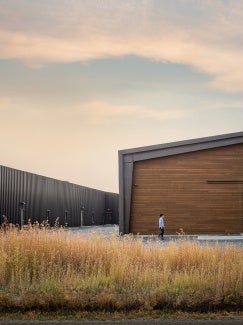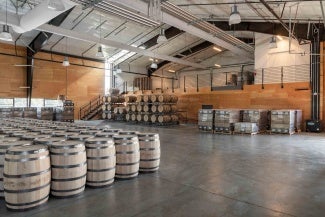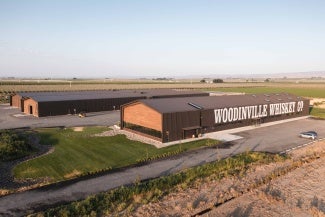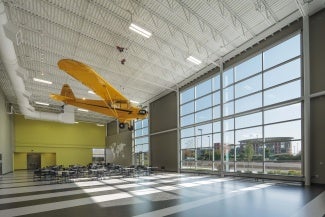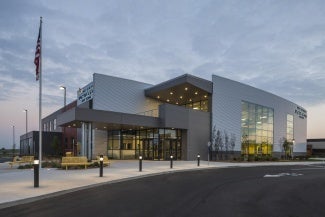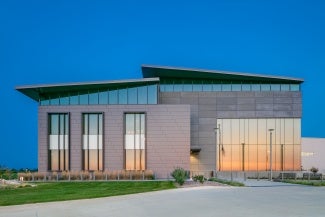
Pre-engineered steel buildings: A smart response to a shifting construction landscape
AIA partner BlueScope Buildings North America explores how PEB systems offer a high-performance framework that blends predictability, design flexibility, and efficiency.
Uncertainty continues to reshape the building industry. From supply chain issues and climate events to shifting economic factors like tariffs, architects and project teams are navigating a growing number of pressures—many of which are beyond their control.
In this evolving landscape, pre-engineered steel buildings (PEBs) have become an increasingly valuable solution. Once associated with basic, off-the-shelf designs, today’s PEB systems offer a high-performance framework that blends predictability, design flexibility, and efficiency—helping teams reduce risk and accelerate delivery.
When delivered through a fully integrated design-fabrication process, PEBs offer even greater control. This approach, used by providers such as Butler Manufacturing and Varco Pruden, delivers precision engineered systems that align structural performance with architectural intent, supporting custom designs while ensuring consistency from concept through construction.
The following strategies explore how today’s pre-engineered systems help design teams respond to complexity with clarity — and build with greater confidence.
Control costs amid inflation and tariffs
In a climate of rising tariffs and fluctuating material prices, cost control is more important than ever. According to AIA, 22% of total project delays in 2025 to date have been tariff-related, up from 9% in 2023. PEBs have been found to deliver cost savings of 10–20% over conventional builds, with standardized components and streamlined supply chains that help mitigate regional price swings and tariff-related risk.
Minimize supply chain issues
Few things potentially jeopardize project completion as much as supply chain issues. Whether it’s not being able to source the materials you need or being hit with scarcity-based price increases, having a project stall out is bad for everyone involved. Pre-engineered systems offer predictable availability, quality, and delivery.
Mitigate construction climate challenges
The short-term and long-term effects of climate events can impact the cost of a project, the availability of materials, and the time available to build. PEBs are engineered for strength and can be designed to withstand severe weather, seismic activity, and extreme snow load.
Accelerate construction without compromising quality
As labor shortages continue to challenge the construction industry, pre-engineered buildings offer a more efficient alternative. Because components are fabricated off site, projects require less skilled labor on site, supporting faster assembly and reduced rework. While full modular builds can reduce on-site labor by up to 80%, according to McKinsey, PEB systems similarly promote off-site efficiency by streamlining the structural package. This can shorten the build cycle and help teams stay on track. In fact, PEBs may reduce construction timelines by 30–50% compared to conventional methods.
PEB Benefits by Industry
Certain industries are particularly well-positioned to benefit from the speed, scalability, and resilience of pre-engineered systems.
Because they can deliver both extremely wide spans and cost efficiencies, pre-engineered buildings are frequently the first choice for warehousing and distribution centers. They also allow for simple expansion as operational needs grow.
Data centers
To meet rising demand for secure, climate-controlled infrastructure, many data center projects are leveraging hybrid solutions—integrating pre-engineered components into value-engineered conventional builds. This approach balances the flexibility of conventional steel with the speed, predictability, and efficiency gains of PEB systems, especially for large-scale or phased campus developments.
Communities facing rapid enrollment growth often need educational facilities delivered quickly and cost-effectively. PEBs are well suited for new schools, expansions, training centers, and athletic complexes.
Manufacturing facilities
Downtime means lost revenue. Pre-engineered systems can quickly deliver factories that are well-planned for productivity and adaptable for future needs.
What architects need to know about PEB planning
PEB systems offer speed-to-market advantages, but that speed depends on early alignment. For optimal outcomes, architects should be prepared to define:
- Functional requirements of the space
- Equipment to be housed and used within the space
- Specific site location
- Total square footage
- Aesthetic goals or preliminary design direction
Once these parameters are established, the structural system can be engineered to support them—enabling greater precision during fabrication. While delivery models vary, early collaboration with the PEB provider helps ensure structural integrity, design intent, and construction efficiency stay in sync.
The trade-off for this approach is greater control over costs and deliverability — factors that help architects not only deliver successful projects but also support the growth and resilience of their practice.
Explore more strategies to get the most from pre-engineered building systems.
AIA does not sponsor or endorse any enterprise, whether public or private, operated for profit. Further, no AIA officer, director, committee member, or employee, or any of its component organizations in his or her official capacity, is permitted to approve, sponsor, endorse, or do anything that may be deemed or construed to be an approval, sponsorship, or endorsement of any material of construction or any method or manner of handling, using, distributing, or dealing in any material or product.

